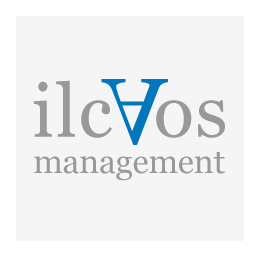The recovery of cultural needs is undoubtedly one of the characteristics of our time. This recovery has happened and is happening not in an elitist key – if that were the case it would be a phenomena limited in time, space and in the reflections of costume subject of scientific studies rather than social interest – but with a dimension of participation and initiatives involving not only the “relevant” institutions, but also instances in the world of work and society. In this sense, the projections of these in those assume a particular role, or we can say rather that they should take a particular role; and then when the Society and the School moves within structures culturally “cutting-edge” they find themselves in the best condition to be able to operate to meet these projections.
Concerning this instrument the real node is the connection of the difficulties shown with those more general of the social services, of the quality of life, of how the choices of society are directed though forms and methods aiming to a new relationship with the local and national citizens and institutions.

The scientific level, the research and the technological innovation today can be seen as the most significant parameters to define the development of a country. Once it was measured by the width of the borders and the colonies: tomorrow may be it will be the quality of services and the ability of connecting and communicating with the other societies; but again, innovation and research will play a key role. These have allowed us to improve the quality of life and to propose solutions – unfortunately not always global – committed to a more rational use of resources. The cultural development of the Country should be a primary goal: is not a matter of valuing the excellence of the system but its integral and the average value with the objective to improve it which requires a clear engagement not only from the State but also from the scientific and productive system of the country directly interested in this growth. The demand for cultural services is constantly developing; it can be seen as an economic as well as social investment but to obtain that conviction we need to create the appropriate boundary conditions based on close partnerships – through : planning agreements and implementing common initiatives between the institutions involved; organizational initiatives, and if the case for legislation to preserve and safeguard the legacy and the findings of scientific and cultural interest to the scrapping wild; construction of a national cultural network that involves all the museums, academies, universities, even less traditional settlements as schools, industries (industrial archaeology), parks and technology parks. In a first step these networks may have provincial or regional significance.
Two phenomena are profoundly affecting the processes of communication and information systems: the high specialization leading to important scientific results of this century and the whirling growth of the media, is so much so that we can pacifically maintain that in this area every attempt of coordination will be impossible if the growth’ rate will remain the same.
The producers of cultural communication are multiple subjects ranging from governments to the media, museums, cultural organizations, the Scientific Authorities to industries with massive commitments of resources (think of the $ 100 million spent by the US government and the equal spending of the Americans Museums that are becoming more communication and training tools than places to be visited by employees or people interested in the museum).
The development of the process of formation and dissemination of scientific knowledge has produced a massive demand of the corresponding services: the result was that in fact in place of the usual visitor’s science museum we must now speak of “public” neither more nor less than is the case for other events and shows: this on the one hand, has produced a search for appropriate solutions of interactions and on the other has moved to the social objects (environment, health) the interest of science museums. However this has led to another advantage: in fact the technological museums born mainly for professionals/experts end up representing the reality so far from all the other compress any stretch of the imagination, immigration and intuition, whereas in the case of telematic society are more the potential and opportunity for representations to be as clear as a self-draw, thereby overcoming another problem of the processes of scientific communication and dissemination, that of language.
Museology is increasingly becoming a synthesis of the traditional articulation of science: not an exact science nor humanistic, perhaps social, that is unified in the vision of the relationship between man-nature, art-science, intelligence-intuition.
It is clear that if we want that culture with it’s informatics, dissemination and communication processes would be a mass phenomena is essential to put culture in a market context, not as the culture of the product but much more as the learning process, as critical dynamic of cognitive phenomenon and also of the scientific process that had been the caused in the first place. Of course the museums must represent these characteristics and adjust to this setting (Museoeconomy). This should means: to address the research interests towards the problems of society and to facilitate the inclusion of this activity in the market economy.
The risk involved in this process is to remove the interest of the citizen from basic research , research as an expression of transformation, of free thought and creation : we begin to cover this risk is by increasing the scientific output (think that in the advanced countries today in terms of literature is less than 10% of the total and Compare this example with the statement of the Museums of 20% of the total compared to science museums) and with a growing awareness.
But that will have to use appropriate language whose importance for training , was born with the school age.
Then there is the political aspect that has manifested itself in two different profiles: science communication and dissemination of the culture grow the cognitive background of the citizens and therefore democracy (must be countered identity Knowledge is power) also formula and the methodology with which it started and carry forward these processes contribute to the process of internationalization of culture that is certainly crucial if you truly believe in integrative processes that need it to grow.
Currently with reference to Europe this process of cultural integration is very slow restrained by objective situations of difficulties that arise from a kind of dichotomy between North and South. The countries of northern Europe’s most industrialized naturalist achieve a culture in which it seems crucial to curb the reckless ambition of “cheap”; countries of the South on the other hand, late, pursuing the traditional culture of consumerism and technology. It’ is also another aspect of heterogeneity within European countries: some of them cultural policies are managed in a unified manner by the government.
Industries and Scientific Community (see Sweden), and others (see Germany and England), the relationship is much more critical. Finally there are the countries for which the media are the traditional scientific and countries for which you are working in alternative forms (eg, virtual reality). This internationalization indeed ought not to lead us to overcome the vocation of the individual and the cultural traditions of the different countries: on the contrary, must be able to integrate with each other.
With these projects, the goals that can be achieved are essentially those given in similar occasions, but here reaffirmed with greater conviction.
Integrate the work of producers and diffusers of culture and science in favour of the approach of the citizens to search.
Enhance the role of the school.
Open areas of democracy and participation.
A teaching of science related through schools, universities, research centres, science and technology parks, Museums is a multidisciplinary project. The multidisciplinary became effective and fruitful, not a trivial attendance, but for the work done: there was always also a form of zero appanage of cultural and social backgrounds of the various situations, one is recognized in the common project, in its development and in different landings, and at times, unpredictable: which is the characteristic most “funny” – retaining both the old and the current meaning of the word – of each research.



